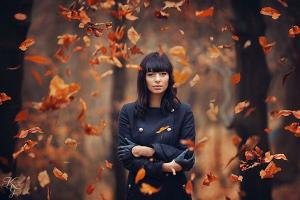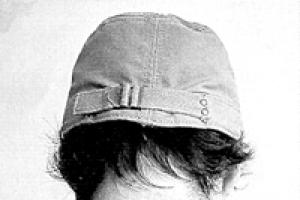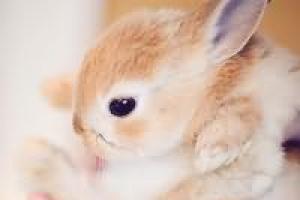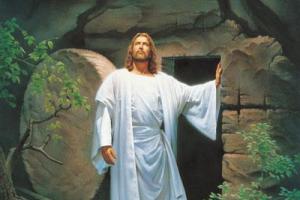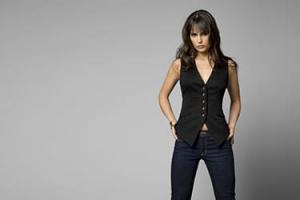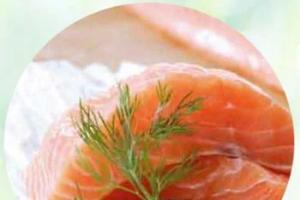Decoupage is such a versatile type of needlework that it is difficult to talk about any rules. After all, every work is a flight of fantasy and creativity. But it is still customary to divide works created using the decoupage technique into thematic groups. So, there are five main and most popular styles of this applied art. Let's look at them in a little more detail so that in the process of creating a new masterpiece we have an idea of what we are doing.
It has become quite popular nowadays to make objects look older than they actually are. The design of a room in this style radiates the tenderness, light and kindness of childhood. And all because pastel colors are used when creating objects of this style. Among them, the most commonly used are: light pink, blue, cream, beige, light lilac, etc. Literally, “shabby chic” means “shabby chic,” which means that any item can have cracks, chips and scuffs. This style is also characterized by the use of motifs with large or small flowers, most often roses, as well as delicate birds and angels. Neatness and elegance are the main features of this style.
Provence
It got its name from the southern province of France. It can be described as a noble old style, elegant and discreet. Just like in shabby chic, Provence uses delicate and pastel colors with scuff marks. Lavender patterns, grape images, sunflowers, and a marine theme are often used as motifs.
Victorian style
This style comes from the majestic and proud Great Britain. The time of its origin is associated with the reign of Queen Victoria. Victorian style can be described in two words: classic luxury. The use of gold, red, and green shades will help in creating a product of this style. Motifs are used with a hint of aristocracy - hunting scenes, patterns with roses, animals, various rich still lifes.
Ethnic style
This style became popular among tourists, and soon received universal love due to its diversity, brightness and originality. Often, after returning from vacation, you want to prolong this feeling, the atmosphere of the place where you had a chance to relax and get a bunch of positive emotions. That is why works in ethnic style began to be created. Such works are characterized by the use of elements traditional for different countries. If India, then these are elephants, if Africa - skins and exotic animals, as well as the active use of motifs with fruits, landscapes of a favorite area.
Simple City
The literal translation is “simple city.” Modern images, deco-patch techniques, and the use of newspaper clippings and magazines are the main features of the simple city style. This style has become popular thanks to the use of improvised means in creating decor. 
There are five main types of decoupage:
- straight (classic);
- back;
- artistic (smoky);
- volumetric (3D decoupage);
- deco patch (patchwork).
Each of them is significantly different from the other, although they all have one thing in common - basic technique for doing the job. The choice of one type or another depends, first of all, on what surface needs to be decorated and what effect you want to achieve.
Let's look at all these types in more detail.
Direct decoupage (classic decoupage)
This is the most famous, widespread, and, at the same time, the simplest type of decoupage. Here, the prepared picture is glued to the surface. The picture can be cut out (or torn out - depending on the source material) from: decoupage napkin, rice paper, decoupage card or printer printout.
The picture is glued to the surface of the product using special decoupage glue or PVA glue.
The picture is pasted onto any pre-treated surface to be decorated: wood, metal, ceramic, glass, plastic.
The picture is glued to the surface evenly, without wrinkles and air bubbles, and this is done in any of the following ways: wet - using a file, hot - using an iron, or usual - the picture is applied to the surface and coated with glue on top. The method is chosen depending on what kind of picture you are using and what it is from.
After gluing, the picture is thoroughly dried in air or with a hot hair dryer, and then covered with several layers of finishing varnish. It is recommended to do intermediate sanding between layers of varnish so that the surface of the product becomes even and perfectly smooth.
Direct decoupage differs from simple applique in that it uses special types of paper, methods of gluing them to the surface and the final result. In direct decoupage, the picture almost completely merges with the background of the surface and does not protrude above it; the edges of the picture, as it were, are written off with the background.
The picture itself, if necessary, can be additionally tinted or decorated in some other way.
Before applying layers of finishing varnish, the product can be aged - make a craquelure.


Reverse decoupage
The very word “reverse” already suggests that in this type of decoupage everything is done in the reverse order - the whole process of work is done exactly the opposite. This type is used mainly on transparent surfaces, on transparent glassware - plates, dishes, stained glass, etc.
The picture is glued to the reverse (back) side of the object being decorated, for example, a transparent glass plate. As a result, the picture is visible through the glass.
The sequence of work for reverse decoupage is approximately the following: craquelure (if necessary), decoration, gluing a picture, applying layers of base paint, fixing the work with varnish.
Often the work also uses artistic painting of the background, i.e. element of artistic decoupage.


Artistic decoupage (smoky decoupage)
This is practically the same as direct decoupage (or reverse), however, here additionally there is an artistic underpainting (with the help of paints) of the picture and its copying, thereby, completely with the background of the surface. In this case, the connection line becomes completely invisible, the picture completely merges with the background color of the product into a single artistic canvas. Artistic decoupage can also be called imitation of artistic painting.
This type of decoupage is used, for example, if you have a picture that does not cover the entire surface of the product, it is small. In this case, the picture is glued to the surface, and then the empty spaces around it are painted in the style of drawing a picture. Skilled craftswomen do this in such a way that then you can’t even tell where the picture is and where the painting begins.




Volumetric decoupage (3D decoupage)
This type of decoupage is created on surfaces with bulges, reliefs, and irregularities, which are created there using texture pastes, drapery made of fabrics, paper, and other natural materials (dried herbs, shells, etc.). The result is not a simple smooth surface, but a surface close to a bas-relief or fresco.
This type of decoupage is not at all simple and only fairly experienced craftswomen can do it beautifully.


In decoupage you can highlight five main types:
- straight (classic);
- back;
- artistic (smoky);
- volumetric (3D decoupage);
- deco patch (patchwork).
Each of them is significantly different from the other, although they all have one thing in common - basic technique for doing the job. The choice of one type or another depends, first of all, on what surface needs to be decorated and what effect you want to achieve.
Let's look at all these types in more detail.
Direct decoupage (classic decoupage)
This is the most famous, widespread, and, at the same time, the simplest type of decoupage. Here, it sticks to the surface. The picture can be cut out (or torn out - depending on the source material) from: decoupage napkin, rice paper, decoupage card or printer printout.
The picture is glued to the surface of the product using special decoupage glue or PVA glue.
The picture is pasted onto any pre-treated surface to be decorated: wood, metal, ceramic, glass, plastic.
The picture is glued to the surface evenly, without wrinkles and air bubbles, and this is done in any of the following ways: wet - using a file, - using an iron, or ordinary - the picture is applied to the surface and coated with glue on top. The method is chosen depending on what kind of picture you are using and what it is from.
After gluing, the picture is thoroughly dried in air or with a hot hair dryer, and then covered with several layers of finishing varnish. It is recommended to do intermediate sanding between layers of varnish so that the surface of the product becomes even and perfectly smooth.
Direct decoupage differs from simple applique in that it uses special types of paper, methods of gluing them to the surface and the final result. In direct decoupage, the picture almost completely merges with the background of the surface and does not protrude above it; the edges of the picture, as it were, are written off with the background.
The picture itself, if necessary, can be additionally tinted or decorated in some other way.
Before applying layers of finishing varnish, the product can be aged - make a craquelure.


Reverse decoupage
The very word “reverse” already suggests that in this type of decoupage everything is done in the reverse order - the whole process of work is done exactly the opposite. This type is used mainly on transparent surfaces, on transparent glassware - plates, dishes, stained glass, etc.
The picture is glued to the reverse (back) side of the object being decorated, for example. As a result, the picture is visible through the glass.
The sequence of work for reverse decoupage is approximately the following: craquelure (if necessary), decoration, gluing a picture, applying layers of base paint, fixing the work with varnish.
Often the work also uses artistic painting of the background, i.e. element of artistic decoupage.


(To enlarge the picture, click on it with the left mouse button)
Artistic decoupage (smoky decoupage)
This is practically the same as direct decoupage (or reverse), however, here additionally there is an artistic underpainting (with the help of paints) of the picture and its copying, thereby, completely with the background of the surface. In this case, the connection line becomes completely invisible, the picture completely merges with the background color of the product into a single artistic canvas. Artistic decoupage can also be called imitation of artistic painting.
This type of decoupage is used, for example, if you have a picture that does not cover the entire surface of the product, it is small. In this case, the picture is glued to the surface, and then the empty spaces around it are painted in the style of drawing a picture. Skilled craftswomen do this in such a way that then you can’t even tell where the picture is and where the painting begins.
This is the most complex, and at the same time, the most beautiful type of decoupage. The quality here depends on the skill of the decoupage artist.




(To enlarge the picture, click on it with the left mouse button)
Volumetric decoupage (3D decoupage)
This type of decoupage is created on surfaces with bulges, reliefs, and irregularities, which are created there using texture pastes, drapery made of fabrics, paper, and other natural materials (shells, etc.). The result is not a simple smooth surface, but a surface close to a bas-relief or fresco.
This type of decoupage is not at all simple and only fairly experienced craftswomen can do it beautifully.




(To enlarge the picture, click on it with the left mouse button)
Decopatch (patchwork decoupage)
This is a kind of mixture of decoupage and patchwork. The product is decorated with pieces of paper glued on the principle of patchwork. The product ends up looking like a kind of patchwork quilt. The work uses special deco patch paper - it most often has floral or ornamental patterns. Pieces of such paper are glued overlapping each other, and as a result a mosaic effect is created. This paper is very thin.
The products themselves can be of any shape, however, most often they are some kind of figurines of animals or birds made of papier-mâché, or pieces of furniture. The products are completely covered with paper fragments. Then they are decorated (if necessary) and varnished.



(To enlarge the picture, click on it with the left mouse button)
When we do some work, sometimes we don’t even think about what types or technologies we use. But now, after reading this short article, it will be easier for you to navigate this wonderful needlework and its types.
Decoupage decorates everyday objects
Today, many libraries in Moscow, St. Petersburg and other large cities invite everyone to attend master classes on decoupage.
What is decoupage? This is a special technique for decorating an object. In French, the word "decoupage" means "to cut out." From this it is clear that we are talking about attaching a design you have cut out to an object and coating the resulting composition with varnish.
A little history
The first mention of decoupage dates back to Germany at the end of the 15th century: there, cut out parts of paintings were used to decorate furniture. The real flowering of this type of art occurred in the 17th century and Venice. Furniture decorated with Asian-style designs was wildly popular in this region.
During the reign of Queen Victoria, decoupage became available to many Englishmen, because then collections with printed cutting sheets appeared in large numbers. From England this hobby made its way to America.
Among the famous people who were fond of this type of art are the painters Pablo Picasso and Henri Matisse, Lord Byron and Marie Antoinette, Madame de Pompadour and many other world famous personalities.

Back in fashion
Today, decoupage seems to be back in fashion. It is used to decorate dishes (plates, cups, etc.), boxes, bags, trays, hats, Christmas tree decorations, various interior items, as well as in the manufacture of fashion accessories.
New elements are now being added to the generally accepted technique: for example, decoupage from napkins, from fabrics and on fabrics. Computer innovations are also being introduced, allowing the use of three-dimensional decoupage or printed pictures. Rice and decoupage cards appeared (and began to be actively used): images printed typographically on special paper.
You can decorate various wooden and ceramic surfaces, candles, fabric, metal - in general, absolutely anything you want. And the use of different techniques - gilding, aging, volumetric decoupage - will allow your imagination to run wild.

Types of decoupage
There are five main types of decoupage:
- straight
- back
- volume
- deco patch
- smoky (artistic)
Direct decoupage is the main method of decorating objects. Beginners are better off starting with this one. He will help you learn how to properly glue and process images and understand all the intricacies of the work, so that later you will not have any problems mastering other decorating techniques.
Reverse decoupage is used on transparent surfaces (vase, glass, etc.). This type differs from the direct one in the sequence of your actions. The first step is to glue a napkin or printout, then the process of creating additional decorative elements and applying artistic effects begins. After this, the surface is primed, the outer side is decorated with direct decoupage (if necessary) and varnished.
Today, several styles of decoupage are popular: country, military, Victorian, Provence, shabby chic, ethno, simple.

What you need for decoupage
Nothing complicated here:
- paper
- scissors
- brush
You don't have to use special paper—cards, wrapping paper, some magazine clippings, and even regular paper napkins will do just fine. We do not recommend using thick materials for decoupage: with them you will not be able to achieve a smooth surface of the object.
It is better to take a brush 1-2 centimeters wide: it will be good for applying both paint and varnish.
By the way, different varnish gives different decorating results. Use a gloss varnish if you want a shiny finish. If you want an antique look, then choose matte varnish.
Materials used: ru.wikipedia.org/wiki/Decoupage
Views: 1,778
Have you ever visited the English bourgeoisie? I had to. And what struck me most in their house was the girl’s room of their eldest daughter, an aristocratic, rich, spoiled, but at the same time very open, inquisitive and friendly girl.
It was a room furnished and decorated in Victorian style, that is, in the style of the reign of Queen Victoria of England in the second half of the 19th century.
The entire space of her room was filled with various accessories and items that imitate wealth and luxury.
The style and design of this girl's room clearly demonstrated her openness to everything new, curiosity, positive and versatile mind, absorbing the new, progressive and mixing it with the traditional and conservative.
In order not to feel lonely, the girl filled the room and surrounded herself with a lot of little things(such “clutter” is one of the hallmarks of the Victorian style) , executed in antique style.
Features of the Victorian style
What immediately caught my eye was that wooden surfaces tables with bent legs, twisted armrests, and indeed all the wooden surfaces of the furniture in her room were matte, that is, not covered with glossy varnish.
All the boxes, made using the decoupage technique in the Victorian style, were distinguished by one feature - the keyholes strongly contrasted with the material of the body of the box itself in texture and color. Thus, boxes made of reddish or brown wood had golden keyholes, and boxes whose bodies were made of golden parts had keyholes made of black metal.
From the furnishings of the room, one could easily guess that its owner had traveled a lot to exotic countries and was familiar with their cultures.
Traits and features that characterize the Victorian style
If we talk about the characteristic features of the Victorian style, then this, of course, and first of all - eclecticism, which is classically defined as a direction in art and architecture in which heterogeneous, not internally connected and even completely incompatible styles, concepts, ideas, views are combined and combined, but as a result a harmonious and holistic style is created.
Victorian style mixed:
- Gothic;
- Rococo;
- Renaissance;
- Classicism;
- Exotica (India, China);
- Ancient traditions;
- Impeccable quality.
Victorian Style Primary Colors- these are dark, dense, rich colors: burgundy, dark brown, bottle green, creamy beige, almond, lilac, ruby red, royal gold. The overall tone is usually muted and soft.
Main motives, used for decorating pieces of furniture, boxes, trays, etc. Most often used: angels, girls in beautiful dresses, lush bouquets of flowers.
Basic techniques: gilding, patination, craquelure.
Basic shapes and lines: straight and arcs, vertical and elongated planes, curls.
Leaving this cozy house into the dank London dampness, I thought: “But creating a Victorian style in a girl’s room is her own, bright world, created as a counterbalance to the gray everyday life!”




